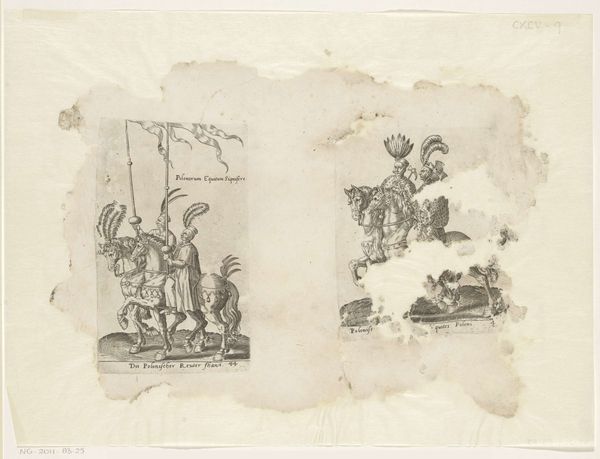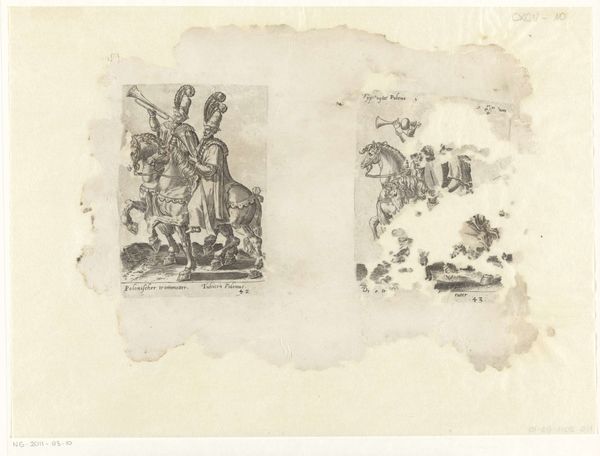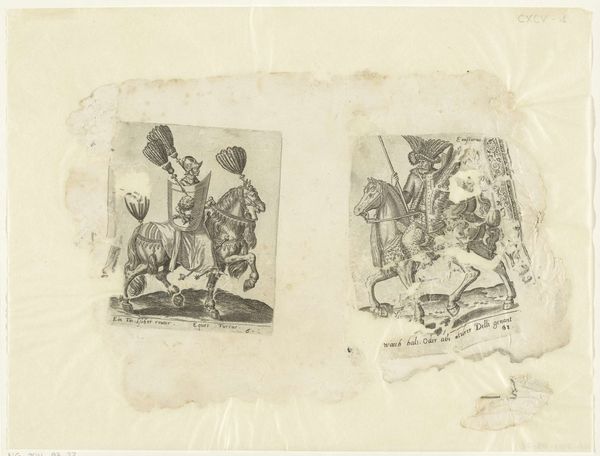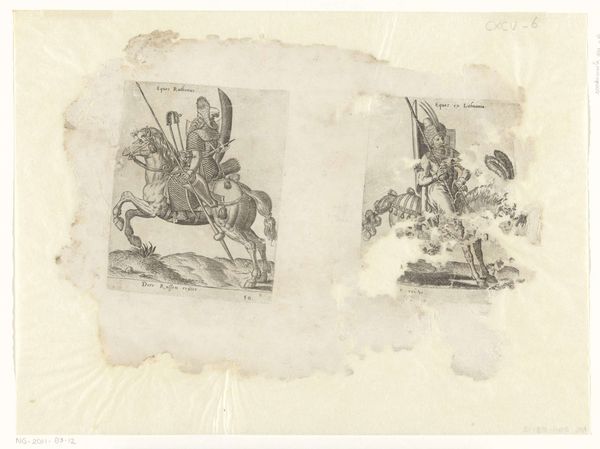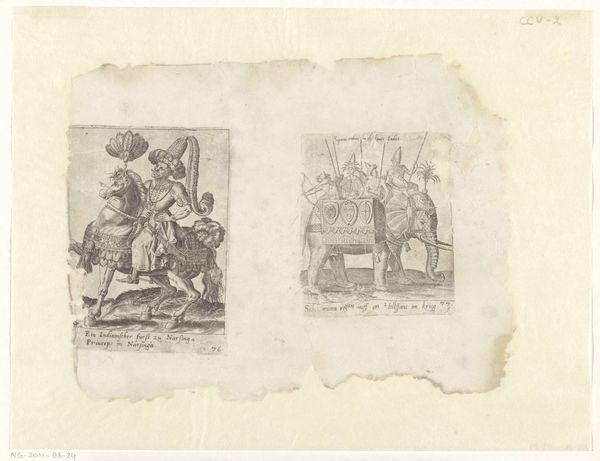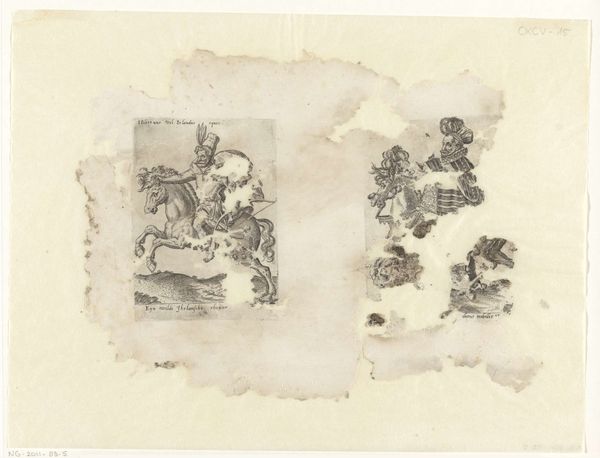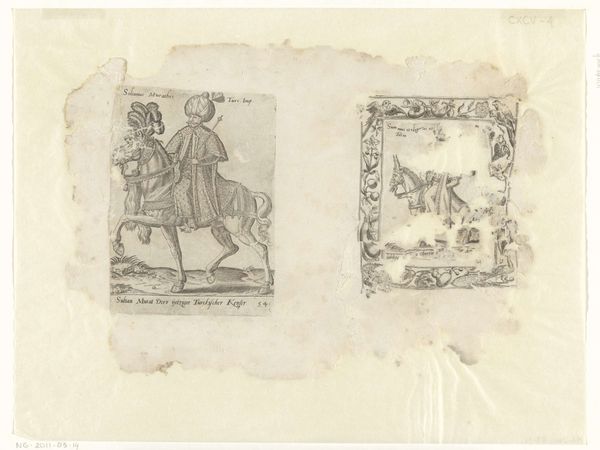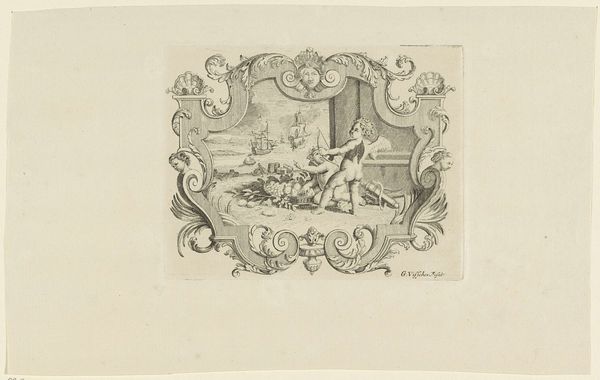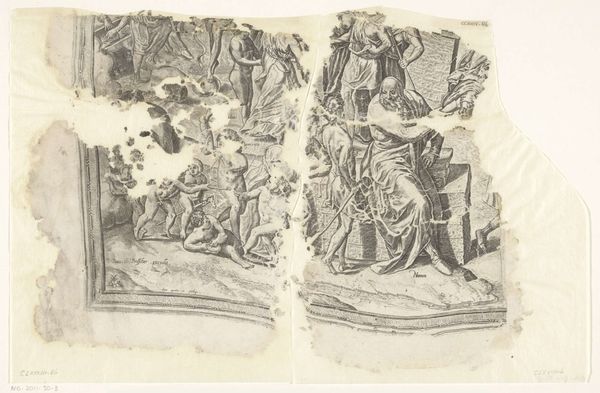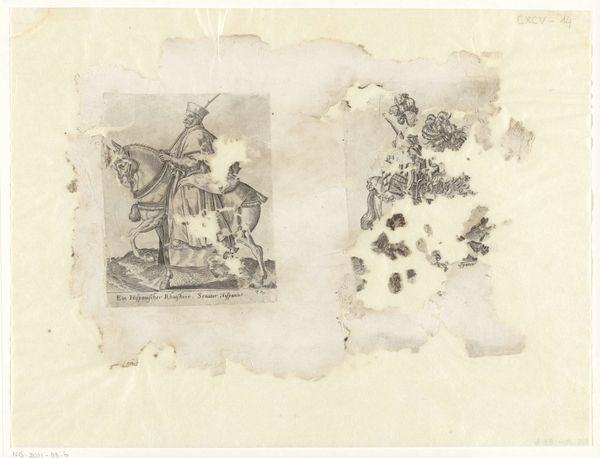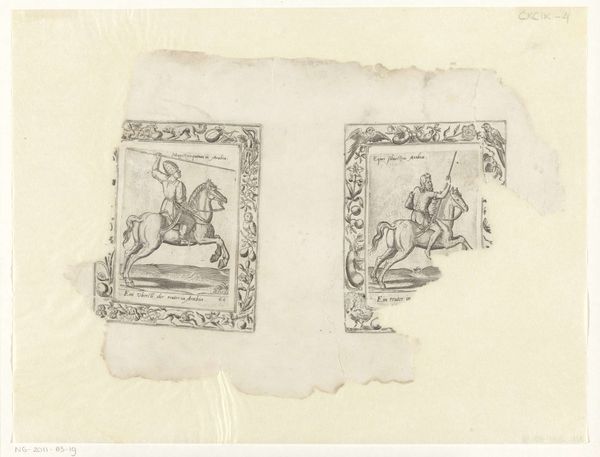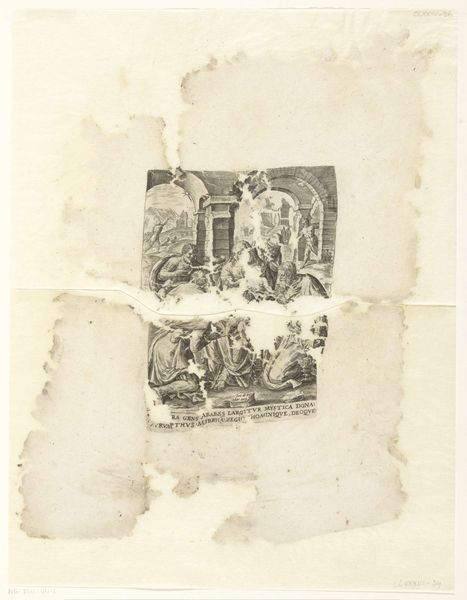
print, engraving
# print
#
mannerism
#
figuration
#
history-painting
#
engraving
Dimensions: height 238 mm, width 328 mm
Copyright: Rijks Museum: Open Domain
Curator: Abraham de Bruyn, working somewhere between 1576 and 1596, gives us "Spaanse ruiter en picador," an engraving residing here at the Rijksmuseum. It’s presented in two segments on the aged paper, showing equestrian figures. What catches your eye? Editor: The immediately striking thing is the fragmented state. Both engravings have sustained damage, wear and tear...they communicate an echo of stories lost in time, histories that demand excavation. There is something poignant in how time and circumstances impact representation. Curator: Indeed. The print depicts horsemen, a subject not unusual for the era. I read these images, even in their damaged condition, as testaments to the power structures embedded within aristocratic European society. Notice the Mannerist style - an interest in elongated figures and intricate details Editor: It's intriguing how fashion of the era is being elevated here as signifiers of wealth and status and privilege, which certainly resonates within contemporary discourse. Curator: Absolutely. When we analyze such pieces through the lens of social history, the imagery provides insight into hierarchies, military culture, and the glorification of equestrian skills among the nobility. It also hints at colonialism because Spanish power and its display depended heavily on what happened in colonized lands. Editor: Yes, a potent intersectional lens. To further emphasize the context, thinking of the relationship between man, horse, and military expansion and classism creates even more interesting conversations about power and control in a society shaped by patriarchy. I also wonder about its initial reception. The common people must have viewed it very differently. Curator: No doubt, particularly because it would have been far less common to even see a horse up close. These kinds of images affirmed the existing order, even with its details that we can now dissect. I wonder, though, looking again at its damaged state, if history and accident reveal how that order eventually breaks down. Editor: That is it precisely. So many fascinating themes and layered complexities emerge. Thank you, Abraham de Bruyn! Curator: A pleasure as always. Thank you.
Comments
No comments
Be the first to comment and join the conversation on the ultimate creative platform.
